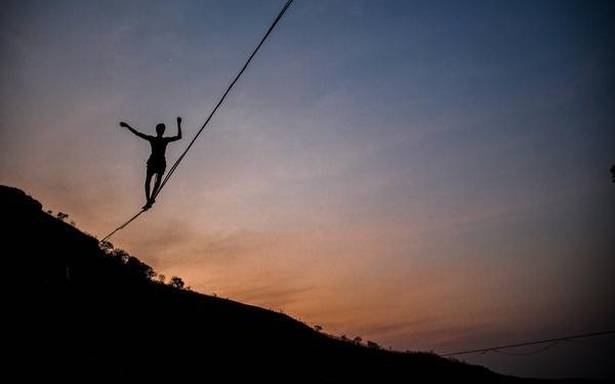As dawn breaks on a cool morning near Lonavala, a group of some 10 people trek to Duke’s Nose in the Western Ghats, rig up a flat nylon rope between two peaks, and begin to walk across the valley at heights ranging from 20m to 200m. This is highlining, an extreme adventure sport, practised by only about 100 people in India, mostly in Mumbai, Pune, Delhi, and Bengaluru.
The big brother of slacklining, highlining does not have an official height at which it begins; this young sport has become popular internationally only over the past 30 years or so, beginning in the Yosemite National Park, California, where rock climbers first took to it.
Says Navin Torres, 27, a core member of Slackline India, a group of highlining enthusiasts, “You can call it highlining from the point at which it begins to feel scary!” The line is rigged by either fixing it to bolts driven into a rock, or by anchoring the rope to a rock or tree.
Last year in Lonavala, full-time highlining athlete Samar Farooqui, 29, from Mumbai walked without a harness twice. “But free solos are not encouraged, because if you fall, you fall to your death,” says Torres. With the harness, he says, it’s one of the safest adventure sports. “Mishaps take place because of the improper use of gear, or not following safety protocols, or due to damaged equipment,” he says.
Rishikesh’s hills, Bengaluru’s outskirts with an abandoned mall, and Delhi’s abandoned quarries, all make good spots to walk the line.
Why highline? “It sounds like a cliché, but it’s life-changing — your primal instinct to preserve your life kicks in, and you’re fighting with yourself to keep walking. You rarely encounter this in daily life,” says Torres.
(Text by Sunalini Mathew and photos by Prashant Nakwe)
Source: Read Full Article

